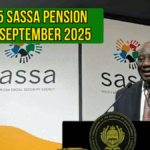Owning a home in South Africa has become increasingly challenging due to rising interest rates, inflation, and the cost-of-living crisis. To provide much-needed financial support, the government introduced the R1400 Mortgage Relief Scheme in September 2025.

This program offers a monthly subsidy of R1400 to qualifying households, directly reducing mortgage repayments. The initiative targets low- to middle-income families who are struggling to balance bond repayments with essential living costs.
This guide explains the eligibility requirements, documents needed, application process, and key benefits of the scheme for South Africans in 2025.
Why the Mortgage Relief Scheme Matters
Housing affordability remains a pressing issue in South Africa. According to financial studies, many households spend more than 30% of their income on housing, leaving little room for other essential expenses.
The R1400 Mortgage Relief Scheme aims to ease this burden and addresses several challenges:
- High interest rates pushing up bond repayments.
- Rising inflation increasing household living costs.
- Debt pressure making families financially vulnerable.
- Risk of homelessness if households cannot meet mortgage obligations.
By subsidizing repayments, the government seeks to create financial breathing space, ensuring families can keep their homes while maintaining stability.
Short Summary: R1400 Mortgage Relief Scheme 2025
Detail |
Information |
|---|---|
Program Name |
R1400 Mortgage Relief Scheme 2025 |
Administered By |
Department of Human Settlements, SASSA & partner banks |
Subsidy Amount |
R1400 per month |
Eligibility |
SA citizens/residents, income R3,500–R25,000, with home loan |
Property Type |
Primary residence only |
Priority Groups |
First-time homeowners, families with dependents |
Application Method |
Online via Department of Human Settlements |
Disbursement |
Direct credit into bond account |
Official Website |
Who Qualifies for the R1400 Mortgage Relief Scheme?
The scheme is targeted, not universal, ensuring assistance reaches those who need it most.
Eligibility Criteria:
- Must be a South African citizen or permanent resident.
- Household monthly income between R3,500 and R25,000.
- Applicant must have a registered home loan with a South African bank.
- The property must be the primary residence (not an investment property).
- Applicant must be up to date or only recently in arrears with bond payments.
- Priority is given to first-time homeowners and households with dependents.
This ensures that the subsidy benefits working-class families, pensioners with outstanding mortgages, and young professionals entering the housing market.
What Documents Are Required?
Applicants must provide official documentation to verify eligibility. Common requirements include:
- Certified copy of South African ID.
- Proof of income (latest payslips or bank statements).
- Mortgage/bond account statement.
- Proof of residence (municipal bill or utility account).
- Household composition declaration (dependents, spouse/partner).
Submitting accurate and complete documents is crucial to avoid delays or rejections.
How to Apply for the R1400 Mortgage Relief Scheme
The government has streamlined the application process to ensure accessibility.
Step 1: Online Application
- Visit the official Department of Human Settlements website.
- Click on “Mortgage Relief Scheme 2025.”
- Complete the application form with personal and financial details.
Step 2: Upload Documents
- Scan and upload required documents in PDF format.
- Ensure documents are clear and certified.
Step 3: Verification Process
- The Department of Human Settlements, SASSA, and participating banks will verify eligibility.
- Applicants may be contacted for additional information.
Step 4: Approval and Disbursement
- Once approved, the R1400 subsidy will be credited directly into the applicant’s bond account each month.
- Beneficiaries will receive SMS or email notifications confirming approval.
Step 5: Annual Review
- Beneficiaries must update their financial details annually to remain eligible.
Benefits of the R1400 Mortgage Relief Scheme
The subsidy provides both immediate and long-term relief:
- Reduces monthly mortgage repayments by R1400.
- Improves affordability of other essentials like food, school fees, and utilities.
- Prevents repossession by lowering the risk of default.
- Strengthens household financial stability.
- Boosts the economy by ensuring greater housing security.
Challenges and Criticisms
While the scheme is widely welcomed, there are some concerns:
- Limited coverage – Not all struggling families will qualify.
- Administrative delays – Large volumes of applications may slow approvals.
- Sustainability questions – Long-term funding of the scheme remains a challenge.
- Exclusion of tenants – Renters facing high housing costs do not benefit directly.
Despite these challenges, the program is a positive step towards addressing housing affordability.
FAQs About R1400 Mortgage Relief Scheme September 2025
1. Who qualifies for the R1400 mortgage relief?
South African citizens or permanent residents with household incomes between R3,500 and R25,000, who own a registered home loan.
2. How is the subsidy paid?
The R1400 subsidy is credited directly into your bond account each month.
3. Can tenants apply for this scheme?
No. The scheme is only for homeowners with registered mortgages.
4. What documents are required?
Applicants must provide their ID, proof of income, mortgage statement, proof of residence, and household composition details.
5. When does the scheme begin?
Applications opened in September 2025, with disbursements starting the same month.
Conclusion
The R1400 Mortgage Relief Scheme (September 2025) is a lifeline for struggling homeowners across South Africa. By directly subsidizing bond repayments, the program reduces financial stress, prevents repossessions, and strengthens family stability.
Although challenges like administrative delays and limited coverage exist, the scheme remains a critical step toward making housing more affordable. Eligible households are encouraged to apply early, ensure documents are correct, and remain updated on annual reviews.
For More Information Click HERE




